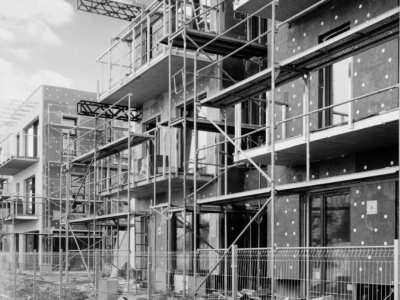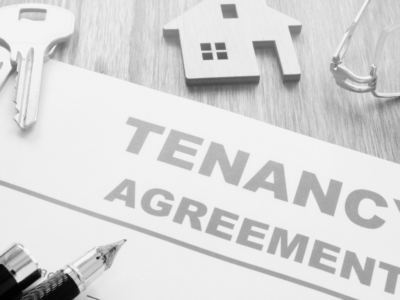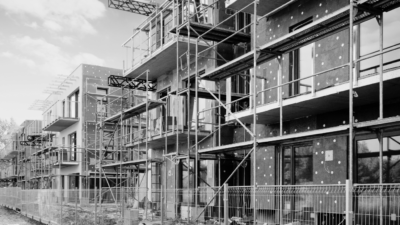The main focal point of Chancellor Rishi Sunak’s ‘mini-budget’ on the July 6th was the hotly anticipated Stamp Duty Land Tax (SDLT) holiday.
An integral part of the Government’s efforts to facilitate a post-COVID economic renewal, the suspending of SDLT payments on all property purchases below £500,000 until March 31st 2021 has been designed to entice buyers back to the housing market after COVID-19 uncertainty ward many off.
And, so far, it is working. In the week that followed the Chancellor’s announcement, property commentators began reporting that a ‘mini-boom’ taking place; as average asking prices in England and Northern Ireland suddenly rose as a result of buyer confidence reaching near-pre-pandemic levels.
This is positive news for the Government and something the Chancellor is no doubt hoping can be maintained.
Government fully behind property
The property listing site Rightmove reported a massive 75% year-on-year rise in inquires for the month of July and a 2.4% increase in the asking price for new properties being brought onto the market when compared to pre-lockdown figures in March.
This resurgence of demand plays into the Government’s wider agenda regarding infrastructure, specifically that of getting Britain to ‘Build, build, build’.
This speech from Boris Johnson, made on the 30th of June, introduced a new £5 billion investment into housing and infrastructure which, in conjunction with this new SDLT holiday, fits into his efforts to instigate a post-pandemic economic recovery with a newly-renewed property market at its centre.
Shifting demands
Regardless of the actions from government and industry actors, COVID-19 will undoubtedly massively affect the kinds of properties buyers are keenest about purchasing.
Much has been written about the ‘new normal’ of working from home and, as such, new non-commuters will likely be seeking larger properties further away from their employers’ offices in the future.
The recent Rightmove statistics, mentioned above, confirm this – showing that the post-SDLT announcement rise of interest in London properties was only 0.5%.
This would mark a change from the traditional London-centric trajectory of the UK’s property industry, especially if we subsequently discover that London may not be the main focus point of high-end developers and overseas buyers in the future.
While buyer and investor preferences are changing, the point is that demand for real estate remains strong.
That’s why there is good reason to be confident that property in the UK is set to enjoy a fantastic recovery in the coming months.
As pent-up demand for property returns and buyers take advantage of the new SDLT holiday, the UK should be enjoying a strong post-COVID economic recovery with the property sector as it’s driving force.
Long-term prospects are also looking positive. Savills recently stood by its prediction of 15% growth in UK house prices by 2024 due to this inevitable return of the growth seen before the pandemic, even as COVID-19 froze the entire industry back in May.
FJP investment’s recent research also showed this demand was likely to return. After surveying 850 property investors, we found that 43% weren’t making any large financial decisions until COVID-19 was contained. As the virus is slowly fought back, then, it makes sense that market activity will rise accordingly.
When this demand does return, I look forward to the UK enjoying a prosperous housing sector once again. It may be too early to try and predict the specifics of how the COVID-19 pandemic will affect the UK property sector.
While we could see shifting changes in demand and buyer preferences, particular in the country’s regional hotspots, which should anticipate significant capital flows into bricks and mortar for the rest of 2020.
The Government’s investment into infrastructure and housing will only help stimulate demand, and with SDLT encouraging buyers (and sellers) to return to the market, there’s plenty of reasons to hold high prospects for the future of property.
Jamie Johnson, CEO of FJP Investment, an introducer of UK and overseas property-based investments to a global audience of high net-worth and sophisticated investors, institutions as well as family offices. Founded in 2013, the business also partners with developers in order to provide them with a readily accessible source of funding for their development projects.






















As usual, the UK Government has done something short-term for political effect without understanding the fundamentals. This is bound to lead to “UNINTENDED” CONSEQUENCES &, probably, the long-term ERODING OF THE TAX BASE + higher house prices.
The political objective is to look pro-active & to be seen to be helping 1st time buyers & “ordinary” voters.
At least, having trailed the idea, they implemented it quickly. Just talking of SDLT reductions leads to MARKET PARALYSIS as buyers wait…
The latest measure is big & will lead to a RE-PRICING, which will have different effects in different SUB-MARKETS (North/South, London/regions, old/young owners, large/small houses, 1st time buyer, investment, buy-to-let etc).
The HOUSING STOCK remains exactly the same though, so putting more money into the pockets of purchasers will RAISE PRICES, compounded by a buying frenzy & ULTRA LOW INTEREST RATES. Middle Class 1st time buyers will clamour to extract funds from the bank of Mum & Dad (the UK’s 5th largest mortgage lender).
Rising prices is a free WEALTH TRANSFER to existing owner,s who are actually the true beneficiaries of the tax cut.
The next problem will be the EXIT STRATEGY. Any attempt to end the “holiday” will be met by industry & political resistance as vested interests will have built around the new status quo. If the measures are reversed, there will then be an inflationary frenzy in the final days & a MARKET COLLAPSE afterwards. Then what?
Markets generally rise gradually up the stairs but can fall suddenly down the lift shaft! The upside risk is small but the downside risk is large.
Never waste a crisis!! This one has been wasted. The opportunity was there to do something really good. This could have been a full package: remove the market distorting “CLIFF EDGES” in the tax system, switch to a seller-pays system, add higher Council Tax bands instead to annually tax £1m+, 2nd, larger, empty, investment etc houses…